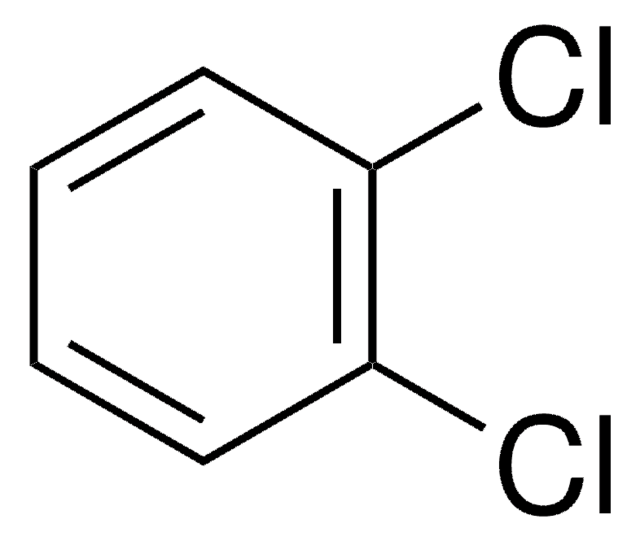466212
1,1,2-Trichloroethane
contains ≤3% 2-propanol as stabilizer, 97%
Sinónimos:
β-Trichloroethane, Vinyltrichloride
About This Item
Productos recomendados
assay
97%
contains
≤3% 2-propanol as stabilizer
refractive index
n20/D 1.471 (lit.)
bp
110-115 °C (lit.)
density
1.435 g/mL at 25 °C (lit.)
functional group
chloro
SMILES string
ClCC(Cl)Cl
InChI
1S/C2H3Cl3/c3-1-2(4)5/h2H,1H2
InChI key
UBOXGVDOUJQMTN-UHFFFAOYSA-N
¿Está buscando productos similares? Visita Guía de comparación de productos
General description
Application
- Advanced Material Development: Research into the synthesis of UiO-66 3D photonic crystals highlights the use of 1,1,2-Trichloroethane in the creation of new materials for efficient vapor detection, supporting advancements in sensor technology (Wang et al., 2022).
signalword
Danger
Hazard Classifications
Acute Tox. 3 Inhalation - Acute Tox. 4 Dermal - Acute Tox. 4 Oral - Aquatic Chronic 3 - Carc. 2
supp_hazards
Storage Class
6.1C - Combustible acute toxic Cat.3 / toxic compounds or compounds which causing chronic effects
wgk_germany
WGK 3
Elija entre una de las versiones más recientes:
¿Ya tiene este producto?
Encuentre la documentación para los productos que ha comprado recientemente en la Biblioteca de documentos.
Los clientes también vieron
Protocolos
US EPA Method TO-17: GC Analysis of Volatiles on VOCOL® after Collection/Desorption using Air Toxics Tube
Nuestro equipo de científicos tiene experiencia en todas las áreas de investigación: Ciencias de la vida, Ciencia de los materiales, Síntesis química, Cromatografía, Analítica y muchas otras.
Póngase en contacto con el Servicio técnico











